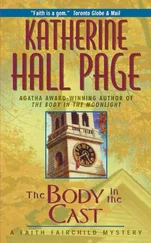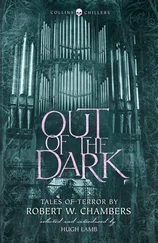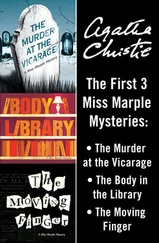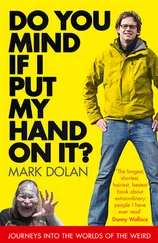Robert Monroe - Journeys out of the body, Practical Guidebook
Здесь есть возможность читать онлайн «Robert Monroe - Journeys out of the body, Practical Guidebook» весь текст электронной книги совершенно бесплатно (целиком полную версию без сокращений). В некоторых случаях можно слушать аудио, скачать через торрент в формате fb2 и присутствует краткое содержание. Жанр: Старинная литература, на английском языке. Описание произведения, (предисловие) а так же отзывы посетителей доступны на портале библиотеки ЛибКат.
- Название:Journeys out of the body, Practical Guidebook
- Автор:
- Жанр:
- Год:неизвестен
- ISBN:нет данных
- Рейтинг книги:5 / 5. Голосов: 1
-
Избранное:Добавить в избранное
- Отзывы:
-
Ваша оценка:
- 100
- 1
- 2
- 3
- 4
- 5
Journeys out of the body, Practical Guidebook: краткое содержание, описание и аннотация
Предлагаем к чтению аннотацию, описание, краткое содержание или предисловие (зависит от того, что написал сам автор книги «Journeys out of the body, Practical Guidebook»). Если вы не нашли необходимую информацию о книге — напишите в комментариях, мы постараемся отыскать её.
Journeys out of the body, Practical Guidebook — читать онлайн бесплатно полную книгу (весь текст) целиком
Ниже представлен текст книги, разбитый по страницам. Система сохранения места последней прочитанной страницы, позволяет с удобством читать онлайн бесплатно книгу «Journeys out of the body, Practical Guidebook», без необходимости каждый раз заново искать на чём Вы остановились. Поставьте закладку, и сможете в любой момент перейти на страницу, на которой закончили чтение.
Интервал:
Закладка:
OBJECT FINDING TECHNIQUES
Technique of Translocation
All translocation techniques are also applicable to object finding techniques since the use of both techniques requires altering the surrounding the space. Instead of concentrating on a location, the practitioner is to focus on the specific detail of a space that is to be found or changed. As a result, finding the necessary object (provided this technique has been mastered) is guaranteed, but maintaining the original location where the action begins is not guaranteed.
If the goal is to find an object while remaining in the present location, use the specialized techniques described later on: techniques that change only a portion of the phase space.
Finding by Calling a Name
This technique is only used to find living objects. The practitioner must call a person or an animal by name to cause the animate phase resident to enter or appear nearby. The call should be loud, nearly a shout, otherwise it will not always work. Generally, it is often enough to pronounce a name several times to achieve results.
If the desired animate object does not have a name or the practitioner does not know it, then any name or general summoning will do, like, “Come here!” This should be done while mentally focusing on a clear image of the desired person or animal.
Finding by Inquiry
To perform this technique, approach any person in the phase and ask him (or her) where to quickly find a desired object. An accurate answer is usually given straight away, and it should be followed.
However, to avoid wasting time, do not forget to mention that the object must be found “quickly”, or specify that the object should be
“nearby”. During this communication, under no circumstances should there be a doubt about the accuracy of the information, since otherwise it may lead to a simulation of what is expected.
The drawback of this technique is that it requires the presence of an animate person and good skill at communicating with objects in the phase, which can prove difficult.
Finding by Turning Around
In order to use this technique, the practitioner must concentrate and imagine that the required object is located somewhere behind his back, and after turning around he will actually see it there, even if it was not there just a moment earlier. This works best if the practitioner, prior to turning around, did not view the place where the object is expected to appear.
Finding Around a Corner
When approaching any corner, concentrate and imagine the required object is just around the corner. Then, after turning the corner, the object will be found. Anything that limits space visibility may be regarded as a corner. This does not have to be the corner of a house or another type of building; it could be the corner of a wardrobe, the corner of a truck, etc.
The drawback of this technique is that it requires the availability of a sufficiently large corner that blocks the view of anything around the other side of it.
Finding in the Hand
This technique is, in essence, only applicable to finding objects that can fit in or be held by the hand. To perform this technique, concentrate on the idea that the object is already in hand. At that moment, the practitioner must not look at it. Soon after beginning to concentrate on this idea, the practitioner will at first feel a slight sensation of the object lying in his hand, followed by a full sensation and appearance of the desired object.
Finding by Transmutation
This technique distorts the phase space while not completely disengaging a perception of the space. The practitioner must give strong attention to a thought that a required object is going to appear in a desired location. There must be sufficient confidence that the practitioner’s desires will be realized. At this moment, the process of metamorphosis will begin: space will distort and dim, and the required object will begin to manifest itself. After this, brightness and focus will be restored with necessary alterations made present in the phase space.
This technique is relatively difficult to perform in comparison to others, and, therefore, it is better to use it only after a high level of experience has been reached because it is difficult to remain in the phase during any metamorphic process.
As is evident in the name of this technique, it can be used to find objects and also create new objects from found objects.
TYPICAL MISTAKES WITH TRANSLOCATION
AND FINDING OBJECTS
• Applying translocation and object finding techniques without the precondition of a steady phase.
• Insufficient concentration on a desire to travel to a location or to find an object.
• Doubting that results will be achieved instead of having complete confidence.
• Passive performance of the techniques instead of a strong desire and high level of aggression.
• Forgetting to repeat translocation or object finding techniques when the technique did not work or worked incorrectly during the first attempt.
• Getting distracted by extraneous thoughts during the lengthy process of teleporting with eyes shut. Total concentration is required at all times.
• Applying the technique of teleportation with eyes open without adequate experience.
• Failing to immediately translocate when using the closed eyes technique; this may induce flying a la the teleportation technique.
• Glossing over minute details or only observing the broad features of a remote object while applying translocation by concentration.
• A delayed desire to move while translocating during separation.
An instantaneous desire to immediately move is necessary.
• Forgetting to first shut a door completely when using translocation through a door; otherwise, there will be contact with what is already behind it.
• Using a translocation technique to go through a wall without knowing how to pass through solid objects.
• Paying too much attention to the process of translocation through a wall; this leads to being trapped in the wall.
• Forgetting to shut the eyes while translocating diving headfirst.
The eyes should remain closed until after the technique is complete.
• Insufficient internal association with an animate object while finding it by calling its name.
• Trying to find an object via interrogation instead of passively communicating with living objects of the phase.
• Using distant corners when applying the technique of finding an object around the corner. Choose nearby corners to avoid wasting precious travel time.
• Applying transmutation techniques without possessing sufficient experience in managing (“maintaining”) the phase space.
Exercises for Chapter 9
Questions
1. What becomes possible with the ability to translocate in the phase?
2. What becomes possible with the ability to find objects in the phase?
3. What do translocation and finding objects techniques have in common?
4. What is the sole limitation on the possibilities offered by translocation and finding objects?
5. How may one translocate across very short distances?
6. When the flight technique by jumping out of a window be attempted?
7. What should be done if translocation and object finding techniques do not yield the required result?
8. Is it possible to find a person from real life using the technique of finding objects?
9. Does the stability of space decrease in a deep phase?
10. What are the fundamental components of space and object stability?
11. How large is the role of auditory perception in the stability of space?
Читать дальшеИнтервал:
Закладка:
Похожие книги на «Journeys out of the body, Practical Guidebook»
Представляем Вашему вниманию похожие книги на «Journeys out of the body, Practical Guidebook» списком для выбора. Мы отобрали схожую по названию и смыслу литературу в надежде предоставить читателям больше вариантов отыскать новые, интересные, ещё непрочитанные произведения.
Обсуждение, отзывы о книге «Journeys out of the body, Practical Guidebook» и просто собственные мнения читателей. Оставьте ваши комментарии, напишите, что Вы думаете о произведении, его смысле или главных героях. Укажите что конкретно понравилось, а что нет, и почему Вы так считаете.










